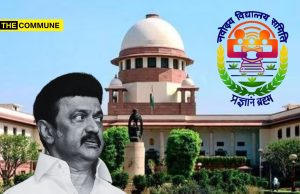
If one were to predict the nature of stimulus that this government was planning to give and the kind of recovery plan that they have in mind, it would be best to look at the Prime Minister’s speech highlighted by the Finance Minister in her tweet on 12th May 2020.
After a devastating earthquake in 2001, Kutch was built, thanks to the undaunted spirit & dedication of its people. Recalling that experience PM @narendramodi felt that people of India will lead the #AatmanirbharBharat Abhiyan.
— Nirmala Sitharaman (@nsitharaman) May 12, 2020
The next part of the clue was also in the same speech where the PM stressed on self-sufficiency with self-respect. The government’s handling of various reforms since 2014 had a singular tone to it – treats its citizens as people who deserve opportunities to improve their economic position, not as an alms seeker who is to be given doles to sustain his living. Yesterday’s announcement of the stimulus indicates that the government is firm in that direction. And yes, the recovery will not be immediate because no recovery is immediate. What we need is a gradual and complete recovery, which will take time.
Will It Work?
That is the million dollar question. As they say that the proof of the pudding is in the eating. We will never know till a year or two has passed. But if you ask the question as “Is there a good chance that it will work?”. The answer would be it has worked before and the recovery has stood the test of time.
As the PM and his colleagues draw from the experience of rebuilding the Kutch region after the disastrous earthquake in 2001, we will attempt to analyse the recovery model that is serving as the blueprint today.
The Kutch Model
Kutch was nothing more than a neglected backwater where the rains were pitifully low with little or no enterprise and those who wanted to start businesses moved to other regions of the state and country to make a living. Then, the earthquake struck. The magnitude of the event was such that many residents had to live in temporary accommodation for months.
Aid was received from across the globe and also from different governments. Rebuilding the houses and settlements were the first priority that used up a majority of that money. What the then state government did with the rest of the money is where the secret lies. These were not squandered in only giving out cash doles to the affected families and waiting for the local economy to recover. Rather the money was spent on building infrastructure, aiding entrepreneurs and making the region attractive for investment. The district headquarters, Bhuj was entirely rebuilt from scratch. It now has an airport, bustling shopping areas, excellent water supply and drainage systems and also footfalls from tourists across the globe. The success of the reconstruction effort could never have been sustained without this model of economic recovery.
10 Years Later
A BBC article clearly points out that the Indian government triggered a private investment boom by creating new investor friendly zones attracting almost Rs. 45,000 crores within 10 years of the disaster. An estimated 300 companies had established their businesses in Kutch and the Adani Group took up Mundra Port and made into a port almost as large as the Mumbai port handling thousands of tonnes of goods a day. Welspun, the company that produces the famous towels for the Wimbledon set up world’s biggest towel factory in the world near Anjar.
Lesson
The State government of Gujarat at that time went against popular opinion of doling out freebies to ease short term pain and focussed on long term recovery. The cycle of demand and economic growth is vicious either way. If there is lesser money in the hands of people, they will spend lesser resulting in lower demand for products and result in slowing down of the economy. On the other hand, if the government only focussed on cash doles through DBT, the demand will spur no doubt, but what after once the cash given by the government is finished? The demand will again slow down. So, how do you break this cycle? The only permanent solution seems to be to create jobs, use this disaster as a means to create more jobs and attract investment leading to thriving economic activity.
To break the Finance Minister’s speech into layman terms, here is what it is – save businesses that may cut down employees, support them and encourage fresh investment into the country that creates new jobs, get the economic engines (the MSMEs) running and the rest of the dominoes will fall one after the other.
Now, rephrasing the original question “Is there a good chance that encouraging businesses and creating / saving jobs will work better than high level of cash transfers through DBT?” Going by the example of how Kutch recovered from the disaster of unimaginable scale through enabling businesses to thrive, there is a good chance that it will work.




